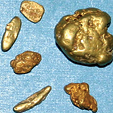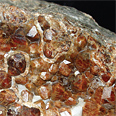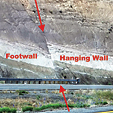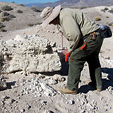History & Geology
Alaska's Cripple Creek Mining District
November 2011 by Jim Halloran
If developed with metal detecting in mind, this virgin ground could be a bonanza for nugget hunting.The Struggle to Reopen Alaska's Largest Gold Mine
The historical AJ mine, located east of Juneau, Alaska, was considered the largest gold mine in the state at one time. Joe Juneau and Richard Harris struck gold there in 1880, and it has been more recently known as a tourist destination.
Arizona's Vulture Gold Mine and Lost Dutchman
When prospectors and treasure hunters talk of gold in Arizona, it is the Lost Dutchman or Vulture mine they usually think of. The Lost Dutchman gold mine is just that—a myth chalked full of holes that has been embellished over time as any good legend should be.
Using Vegetation and Soil Conditions as Prospecting Aids
Wouldn’t it be great if you could know if there is gold in the ground without setting foot on the ground? Well you can, to a certain extent, if you can recognize mined ground from unmined.
How Far Has That Gold Traveled?
 Let’s examine why your placer gold looks the way it does and what you can tell about its journey based upon its appearance.
Let’s examine why your placer gold looks the way it does and what you can tell about its journey based upon its appearance.
All About Garnets
 I get a lot of questions from prospectors about garnets, their value and what they tell us about the geology of some types of mineral deposits. So I thought it would be a good idea to take a closer look at the lowly garnet and learn a bit more about it.
I get a lot of questions from prospectors about garnets, their value and what they tell us about the geology of some types of mineral deposits. So I thought it would be a good idea to take a closer look at the lowly garnet and learn a bit more about it.
The Goldfield Mining District -- Then and Now
 In 1983, some of the ore yielded more than 2,500 ounces of gold within 30 feet of the surface. The shoot pinched to a narrow vein.
In 1983, some of the ore yielded more than 2,500 ounces of gold within 30 feet of the surface. The shoot pinched to a narrow vein.
The Batteries Metal Rush
 There is a major change coming in the economy of the world and now is the time for prospectors and miners to grab a ticket and get on board.
There is a major change coming in the economy of the world and now is the time for prospectors and miners to grab a ticket and get on board.
Subscription Required:
The Bawl Mill
• Legislative And Regulatory Update
• Ask The Experts—Compensation for closed mining claim?
• Ask The Experts—Inconsistent fire assays
• Gold From Cemented Gravels
• Evolution Of A Gold Prospect
• Gold, Quartz & Chalcedony—Part II
• Alaska to Target Rare-Earths
• Minnesota Delays Decision on Mineral Leases
• The Gold Of Horseshoe Bend
• Tyrie's Roadway Nugget
• Melman on Gold & Silver
Free:
Are Permits Needed For Highbanking In California?
• Prospecting Australia—Part II: There and Back Again







